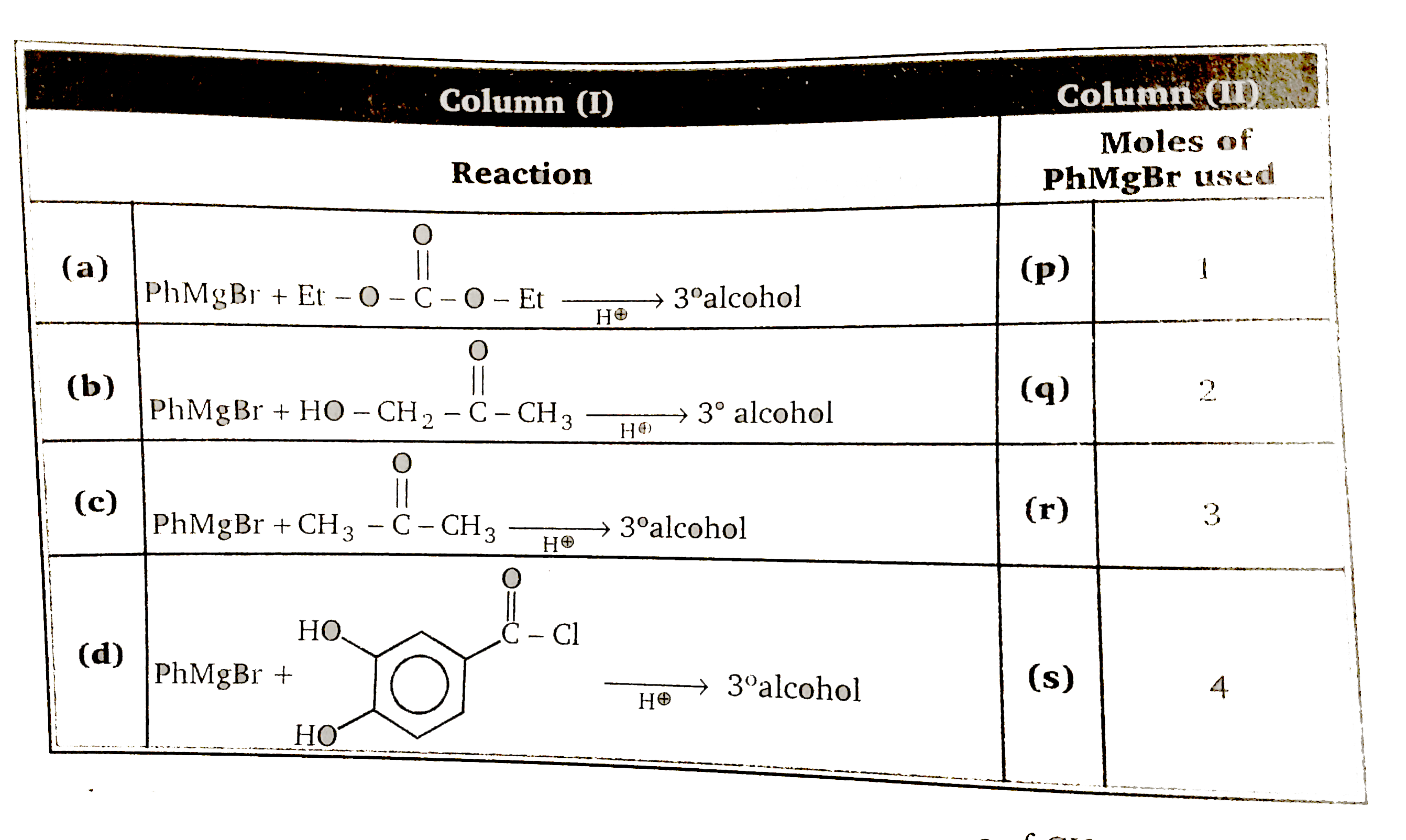Match the following. a. Gametangial contact (Coloumn I) - (i) Agaricus(Coloumn II) b. Planogametic copulation(Coloumn I) - (ii) Mucor(Coloumn II) c. Somatogamy(Coloumn I) - (iii) Puccinia(Coloumn II) d. Gametangial copulation (Coloumn I) - (iv) Allomyces (Coloumn II) e. Spermatization(Coloumn I) - (v) Pythium (Coloumn II)
a(v), b(i), c(iv), d(iii), e(ii)
a(v), b(iv), c(i), d(ii), e(iii)
a(i), b(iv), c(iii), d(ii), e(v)
a(iii), b(ii), c(iv), d(v), e(i)
The correct Answer is:B
Topper's Solved these Questions
Similar Questions
Match the following.
a.Floating roots(Coloumn I) - (i)Podostemon(Coloumn II)
b. Assimilatory roots(Coloumn I) - (ii)Cuscuta (Coloumn II)
c. Hygroscopic roots(Coloumn I) - (iii)Bryophylum (Coloumn II)
d. Haustorial roots(Coloumn I) - (iv)Jussiaea (Coloumn II)
e. Epiphylous roots(Coloumn I) - (v)Orchids(Coloumn II)
View SolutionMatch the following coloumns and select the correct option. a. Hibernation(Coloumn-I) - (i) Snails(Couloumn-II) b. Aestivation(Coloumn-I) - (ii) Many zooplanktons(Coloumn-II) c. Migration(Coloumn-I) - (iii) Polar bears(Coloumn-II) d. Diapause(Coloumn-I) - (iv) Siberian cranes(Coloumn-II)
View Solution
Knowledge Check
Match the following. a. Mixotrophic protist (Coloumn I) - (i) Paranema(Coloumn II) b. Plasmodial slime mould (Coloumn I) - (ii) Polysphondylium(Coloumn II) c. Holozoic protist (Coloumn I) - (iii) Euglena(Coloumn II) d. Saprobic protist (Coloumn I) - (iv) Physerum(Column II) e. Communal slime mould (Coloumn I) - (v) Rhabdomonas (Coloumn II)
Aa(ii), b(iv), c(i), e(v), d(iii)Ba(i), b(ii), c(iii), d(iv), e(v)Ca(iii), b(iv), c(i), d(v), e(ii)Da(i), b(iii), c(ii), d(iv), e(v)Match the following. a.Floating roots(Coloumn I) - (i)Podostemon(Coloumn II) b. Assimilatory roots(Coloumn I) - (ii)Cuscuta (Coloumn II) c. Hygroscopic roots(Coloumn I) - (iii)Bryophylum (Coloumn II) d. Haustorial roots(Coloumn I) - (iv)Jussiaea (Coloumn II) e. Epiphylous roots(Coloumn I) - (v)Orchids(Coloumn II)
Aa(iii), b(i), c(v), d(ii), e(iv)Ba(ii), b(i), c(v), d(ii), e(iv)Ca(iv), b(i), c(v), d(ii), e(iii)Da(i), b(ii), c(v), d(iii), e(iv)Match the following coloumns and select the correct option. a. Hibernation(Coloumn-I) - (i) Snails(Couloumn-II) b. Aestivation(Coloumn-I) - (ii) Many zooplanktons(Coloumn-II) c. Migration(Coloumn-I) - (iii) Polar bears(Coloumn-II) d. Diapause(Coloumn-I) - (iv) Siberian cranes(Coloumn-II)
Aa(iii), b(iv), c(i), d(ii)Ba(iii) ,b(i) ,c(iv) ,d(ii)Ca(i) ,b(iii) ,c(ii) ,d(iv)Da(iii) ,b(ii) ,c(iv) ,d(i)
Match the coloumn I with coloumn II and select the correct option. a. Rhizome(Coloumn I) - (i) Lily(Coloumn II) b. Bulb(Coloumn I) - (ii) Gladiolus(Coloumn II) c. Sucker(Coloumn I) - (iii) Grass(Coloumn II) d. Corm(Coloumn I) - (iv) Curcuma(Coloumn II) e. Runner(Coloumn I) - (v) Banana(Coloumn II)
View SolutionMatch the following coloumn. a. Corticolous (Coloumn I) - (i) Fungi growing on cow dung (Coloumn II) b. Xylophilous (Coloumn I) - (ii) Fungi growing on wood (Coloumn II) c. Epixylic (Coloumn I) - (iii) Fungi growing on hair (Coloumn II) d. Keratinophilous (Coloumn I) - (iv) Fungi growing on burnt wood (Coloumn II) e. Coprophilous (Coloumn I) - (v) Fungi growing on bark (Coloumn II)
View SolutionMatch The coloumn I and II. (Matrix)

View SolutionMatch the coloumn I with coloumn II and select the correct option. a. Rhizome(Coloumn I) - (i) Lily(Coloumn II) b. Bulb(Coloumn I) - (ii) Gladiolus(Coloumn II) c. Sucker(Coloumn I) - (iii) Grass(Coloumn II) d. Corm(Coloumn I) - (iv) Curcuma(Coloumn II) e. Runner(Coloumn I) - (v) Banana(Coloumn II)
View SolutionMatch the following coloumn. a. Corticolous (Coloumn I) - (i) Fungi growing on cow dung (Coloumn II) b. Xylophilous (Coloumn I) - (ii) Fungi growing on wood (Coloumn II) c. Epicylic (Coloumn I) - (iii) Fungi growing on hair (Coloumn II) d. Keratinophilous (Coloumn I) - (iv) Fungi growing on burnt wood (Coloumn II) e. Coprophilous (Coloumn I) - (v) Fungi growing on bark (Coloumn II)
View Solution
